 Mechanical Reasoning Study Guide & Tips | Gears, Pulleys & Everything Between
Mechanical Reasoning Study Guide & Tips | Gears, Pulleys & Everything Between
Take advantage of insider tips & tricks, questions & answers and everything you need to know to ace the test.
How to Prepare for the Mechanical Aptitude Test
The most tried and true method for preparing for this and any other test will be to practise beforehand. Knowing what to expect and how to answer the questions you will encounter will give you a major advantage over other candidates.
Our free mechanical aptitude sample test can give you a baseline for the concepts and skill level required to pass your mechanical reasoning test. Want more in-depth mechanical aptitude test practice? Our full mechanical reasoning PrepPacks™ include dozens of practice questions, complete study guides, answer explanations and more to ensure that you are fully prepared on test day.
Mechanical Reasoning Test Questions and Answers
The purpose of a mechanical reasoning test is to evaluate your understanding and application of mechanical concepts to find solutions to a variety of mechanical scenarios. Questions that you will often encounter on a mechanical aptitude test include:
| Acceleration | Applied maths | Balancing scales |
| Ballistics | Circular motion | Clamps |
| Cogs | Friction | Gears |
| Gravity | Kinetic and potential energy | Levers |
| Magnetism | Mechanical terminology | Mirrors and reflection |
| Pressure and weights | Pulleys | Screws |
| Shafts | Simple electrical circuits | Spatial or visual relations |
| Springs | Tools of the trade | Volumes |
| Wheels and belts | - | - |
Due to the wide range of topics covered by mechanical reasoning tests, it is no wonder that practising beforehand is crucial to a successful result. Through in-depth practice tests and study guides, our mechanical aptitude PrepPacks™ are designed to help you improve your knowledge and application of mechanical and electrical concepts, thus giving you the ability to pass your pre-employment exams with ease.
Gears & Pulleys
A gear can be represented as either a wheel or cylinder. A major characteristic of these wheels/ cylinders are the cogs/ teeth running along their outside edges. The three main purposes of gears are to change the direction of motion, increase or reduce speed and force, or to transmit force.

Questions regarding gears will typically use the rules below to solve. The fundamental rules of thumb for solving mechanical reasoning questions concerning gears/ cogwheels are:
- If gears are connected (meshed), adjacent gears will move in the opposite direction. If there are an odd number of cogwheels, the last wheel will turn in the same direction as the first wheel. In a system with an even number of cogwheels, the last cogwheel will turn in the opposite direction of the first.
Consider the following example:

- Unmeshed (not physically touching) gears that are connected by a chain or belt will move in the same direction. If the chain is crossed,they will move in opposite directions:
- There is a trade-off between force and speed: more teeth – lower speed, more force.
- Less teeth – higher speed, less force.
- Gear ratio: N1/N2 = V2/V1 (N is the number of teeth on gear 1/2, V is the rotation velocity).
For more information regarding the types of questions on gears that you may encounter on your assessment, please see below:
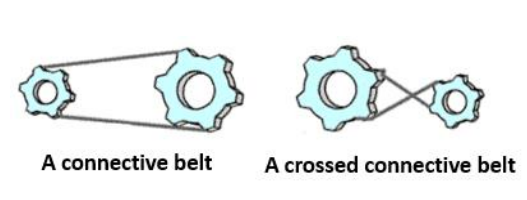
When a belt or a chain connects to unmeshed cogwheels, both wheels will turn in the same direction. If the belt is crossed, they will turn in opposite directions.
In this case, the wheel’s velocity will be proportional to its radius rather than its number of teeth; aka its gear ratio:
- larger wheels will turn more slowly than smaller wheels. A larger wheel has a greater circumference and therefore covers a greater distance for every single turn, whereas a smaller wheel has to turn more than once in order to cover the same distance. The ratio of their diameters (or equivalently, the ratio of their radii) is directly proportional to the gear ratio and is inversely proportional to the ratio of wheel velocities.

When an internal cogwheel (light blue) and an external cogwheel (grey) are joined together, they will move in the same direction. However, the velocity-to-size ratio will remain as with internal cogwheels.

When a cogwheel connected to a toothed rack, the force is transferred from circular to linear. In this instance, the rack will move in the same direction as the wheel at the meshing point. The illustration above shows the cogwheel moving in a clockwise direction. At the meshing point, you can see that the wheel's direction is moving toward the left (red arrow). Because of the rack underneath will move to the left.
In general:
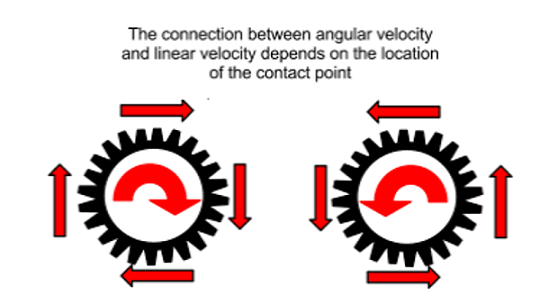
Pulleys
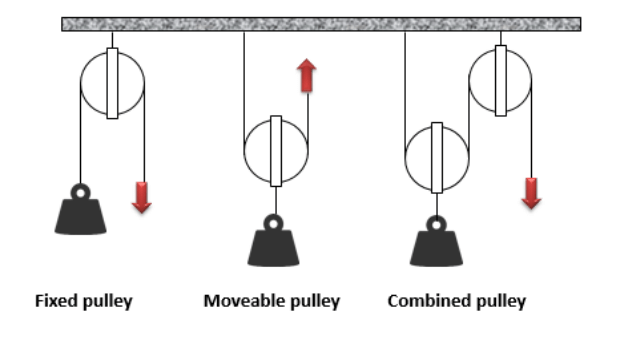
Pulley systems typically involve one or more wheels controlled by a cord/ rope/ belt. By changing the direction of force applied to the rope, pulleys can be used to lift heavy objects/ weights. There are a variety of different pulley systems that you will encounter during a mechanical aptitude assessment. These include:
In a fixed pulley system, the load will move while the pulley does not. The pulley does not reduce the force needed to lift the load, it merely changes its direction.
In a moveable pulley system, the pulley will move along with the load. This, in turn, cuts the force of lifting the object and its weight in half.
As with gears, here there is also a trade-off. You will need half the force to lift the load, but double the amount of rope. E.g. to lift a load with a moveable pulley to a height of 1 meter, you will need 2 meters of rope. That rate increases as the number of pulleys increases.
These systems include more than one pulley and will either include both fixed and/ or moveable pulleys. In these systems, the force for lifting an object will be reduced but the distance for doing so will increase. The force required to lift the object is equal to the number of ropes supporting it.

Pass Your Mechanical Reasoning Test
Start building your skills against real test simulations, and outperform most of your competition with just a few days of practise.
Important Formulas
It is wise to brush up on certain mechanical formulas when preparing for a mechanical aptitude test. Below are some examples of formulas that you should know prior to sitting a mechanical reasoning test:
A = lw
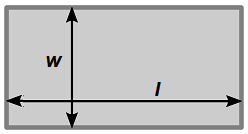

L = Length
Area = πr2
Area = ½bh
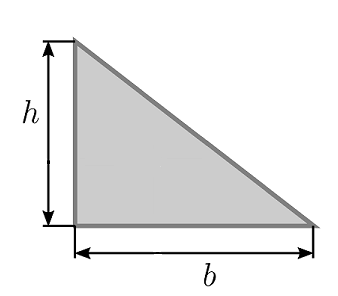
B = Base
H = Height
Cuboid
V = b x h x w
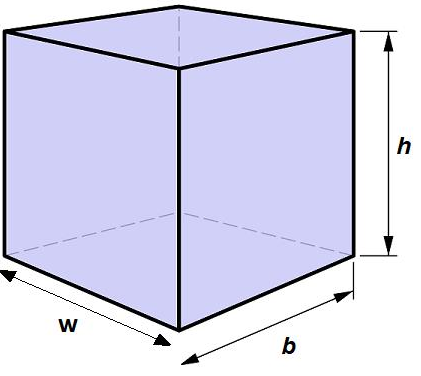
Cylinder
V = πr2 x h
Weight (W) x Distance (D1) = Force (F) x Distance (D2)
N1/N2 = V2/V1
Or
N1 x V1 = N2 x V2
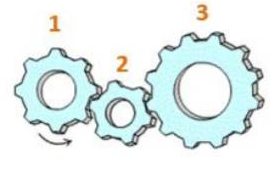
N1 = Number of teeth on wheel 1
N2 = Number of teeth on wheel 2
V1 = Velocity of wheel 1
V2 = Velocity of wheel 2
So if N1 = 8, N2 = 5. The gear ratio (1-2) will be = N1/N2 = V2/V1 = 8/5.
PV = nRT
P = Pressure
V = Volume
n = number of gas particles (amount of gas)
R = Gas constant (just a number)
T = Temperature
It should be noted that it is not as important to remember the formula exactly as it is important to know what it must hold. If a certain part of the equation changes, some other part must also change to maintain the equality (for instance, if the volume decreases, pressure must increase).
Ohm’s law states that the current passing through a conductor between two points is directly proportional to the potential difference across them.
I = V/R, or V = IR, or R = V/I
V = the potential difference measured across the conductor, in volts
R = the resistance of the conductor, in ohms
I = the current, in amperes
Another major part of a mechanical reasoning test will be questions concerning electrical concepts. These questions will come in the form of electrical circuit diagrams. Electrical circuits can be connected in two different ways: in series and in parallel. Examples of both types of circuits can be found below:
In Series
Components in series are connected along a single path so that the same current flows through all of them. In addition, the sum of the voltages each component develops is the total voltage produced in the system. Thus, it can be deduced according to Ohm's law that the total resistance of the system would be:
𝑅1 + 𝑅2 + ⋯ + 𝑅𝑛 = 𝑅τ
In a series circuit, a failure in any single component can potentially break the entire circuit as it breaks the flow of the electrical current.
In Parallel
Components in parallel are connected so that the same voltage is applied to each one. In a parallel circuit, the voltage across each of the components is identical, and the total current is the sum of the currents flowing through each of the components. Since the voltage of each component is identical but the currents add up, we again use Ohm’s law to deduce that the value of total resistance is:
1/𝑅1 + 1/𝑅2 + ⋯ + 1/𝑅𝑛 = 1/𝑅τ
In a parallel circuit it is possible for only one component to function when all others fail; thus the circuit will still function.
Another major part of a mechanical reasoning test will be questions concerning electrical concepts. These questions will come in the form of electrical circuit diagrams. Electrical circuits can be connected in two different ways: in series and in parallel. Examples of both types of circuits can be found below:
In Series
Components in series are connected along a single path so that the same current flows through all of them. In addition, the sum of the voltages each component develops is the total voltage produced in the system. Thus, it can be deduced according to Ohm's law that the total resistance of the system would be:
𝑅1 + 𝑅2 + ⋯ + 𝑅𝑛 = 𝑅τ
In a series circuit, a failure in any single component can potentially break the entire circuit as it breaks the flow of the electrical current.
In Parallel
Components in parallel are connected so that the same voltage is applied to each one. In a parallel circuit, the voltage across each of the components is identical, and the total current is the sum of the currents flowing through each of the components. Since the voltage of each component is identical but the currents add up, we again use Ohm’s law to deduce that the value of total resistance is:
1/𝑅1 + 1/𝑅2 + ⋯ + 1/𝑅𝑛 = 1/𝑅τ
In a parallel circuit it is possible for only one component to function when all others fail; thus the circuit will still function.
See below an excerpt of the full mechanical reasoning study guide that holds invaluable tips and formulas to maximize your performance.
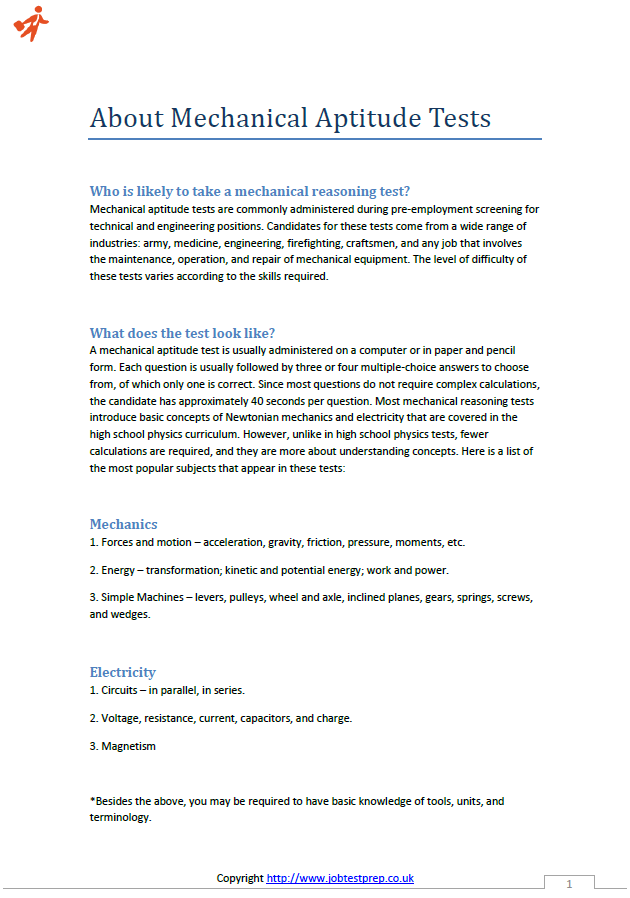

JobTestPrep’s Mechanical Reasoning Test Practice
If you are looking to improve your mechanical reasoning abilities and test scores, look no further. Get the full guide included in the All-inclusive bundle along with 35+ practice tests.
Tips and Shortcuts
Below you will find tips and examples of shortcuts that you may find useful to passing your mechanical exam.
This is crucial! The guide included with our mechanical reasoning preparation materials deals exclusively with tests that assess your ability to understand and implement basic physical principles and concepts. Other mechanical tests, which require a higher academic level in physics, or specific vocational knowledge, require completely different studying methods.
Each test has its own priorities, obviously, but as a safe bet you could say that questions in a common mechanical test tend to be focused on the following subjects (ordered by prevalence from high to low):
- Force and moment
- Gears
- Wheels and pulleys
- Hydraulics
- Velocity and gravity
- Electrical circuits
- Thermodynamics
- Acoustics and optics
The bulk of the questions on mechanical tests are qualitative – meaning they are designed to assess your understanding of concepts, and not quantitative, which require calculations and accuracy.
It is extremely important to understand the underlying physical concepts that each question is based on. That way, you can "project" these concepts on new, never-seen-before situations.
Get ample practise. Our free online mechanical aptitude practice test only gives a glimpse of what our full PrepPack™ can give you. To ensure that you are able to pass your mechanical exam, we highly recommend using our full-length practice tests as they come with in-depth study guides and answer explanations aimed at improving your learning process. Practising with comprehensive materials will make all the difference.
Job level will determine test difficulty. Mechanical reasoning tests are used for many different jobs across several industries. These tests are often given for entry-level roles, but also for more experienced roles as well. Depending on the role you have applied for, the difficulty of your mechanical reason test is subject to increase. Our preparation materials can be used for a variety of job levels to ensure that you are getting the best practice possible.
Time management. Because mechanical aptitude tests are timed, it is best to answer each question in 30 seconds or less. Practising beforehand will help you to increase your speed and accuracy in answering the questions you will encounter.
Don’t stress. Giving yourself time to practice for your test beforehand will help you pass your test with confidence. There is no need to stress yourself out if you allow yourself to become familiar with the test structure, questions styles, and methods of answering.
Ace Your Job Search with a Custom Prep Kit
Job hunting doesn't have to be stressful.
Prepare smarter and ace your interviews faster with our Premium Membership.



General Advice
Passing your mechanical aptitude test will all come down to how you have prepared. We have compiled a list of useful tips and advice to help you make the most out of your preparation time.
- Build yourself a practice schedule. Managing your time both before and during your test will give you the best chances for success. Giving yourself enough time to practice prior to your exam date will help you to boost your knowledge of each of the concepts you will be tested on, thus improving your answer speed and accuracy. The more you study for your exam, the better your chances of receiving a higher than average score.
- Remove distractions. Similarly to being interviewed over the phone, you should always practise for and take your aptitude tests in a quiet place. Limiting distractions such as noise and social media will help to improve the clarity of your thought process allowing you to focus on the task at hand. The more you are able to focus on practising for your test, the better your chances will be of passing.
- Get a restful night's sleep before your test. Getting enough sleep prior to sitting a pre-employment test should be a no-brainer. You should allow yourself between 7-8 hours of restful sleep to help increase your mental focus and ability to answer each question quickly. A good night's sleep and a balanced breakfast really will make all the difference prior to sitting your test.
Sign up today for full access to our mechanical reasoning study guides.
More Free Practice
We at JobTestPrep find the assessment tests world highly diverse and fascinating. If you are looking to deepen your knowledge in the aptitude tests world, or you want some extra practice before your test, we've got you covered!
Check out these fantastic free practice tests (all are completely free):
Free Aptitude Test | Free Psychometric Test | Free Numerical Reasoning Test | Free Verbal Reasoning Test | Free Cognitive Test | Free Critical Thinking Test | Free Abstract Reasoning Test | Free Spatial Reasoning Tets | Free Personality Test | Free Inductive Test | Free Mechanical Reasoning Test


